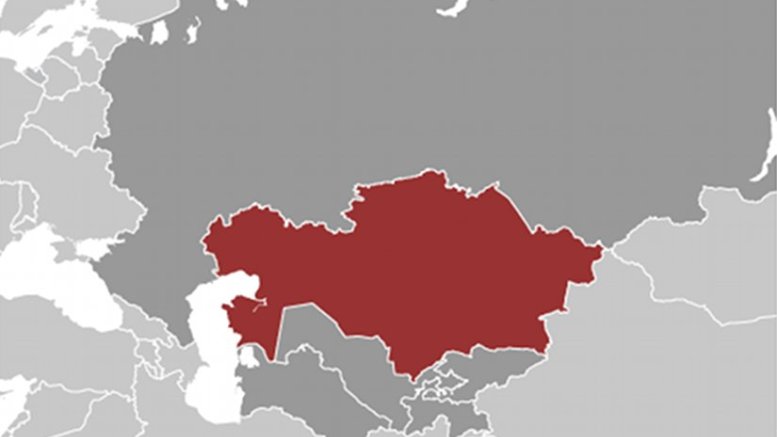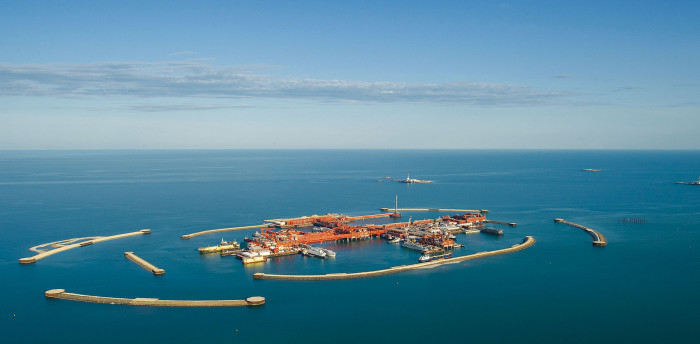 Many were puzzled by Trump’s outreach as Kazakhstan is ruled by an authoritarian dictator, is not a democracy, does not champion or guarantee basic democratic rights such as freedom of speech and press, and is known more for its human rights abuses than its partnership with the U.S. Trump’s nascent and unpublicized nuclear policy is the opposite of Kazakhstan’s nuclear efforts and can impact the blossoming and important partnership.
Many were puzzled by Trump’s outreach as Kazakhstan is ruled by an authoritarian dictator, is not a democracy, does not champion or guarantee basic democratic rights such as freedom of speech and press, and is known more for its human rights abuses than its partnership with the U.S. Trump’s nascent and unpublicized nuclear policy is the opposite of Kazakhstan’s nuclear efforts and can impact the blossoming and important partnership.
Trump’s comments about nuclear weapons have many puzzled, horrified, and left many wondering what to think about the former candidate’s now President elect’s statements and if they should take them seriously.
Kazakhstan has been a reliable partner in the Former Soviet Union space in the realm of non-proliferation and nuclear weapons cooperation. According to research conducted for this analysis, no reactions were identified from Kazakhstan about President-to-be Trump’s comments on shifts in U.S. nuclear policy.
Mr. Donald Trump, using the social media tool, Twitter, called for expanding the U.S.’ nuclear capability. Mr. Trump throughout the 2016 Presidential campaign never provided a clear nuclear policy but using rhetoric he has hinted at severe policy changes. On 23 December, Trump told American news channel MSNBC: “Let it be an arms race. We will outmatch them at every pass and outlast them all.” Many pundits jumped to the conclusion that Trump was reversing decades of policy of nuclear arms by undermining progress, igniting an arms race, and instigating our enemies with the threat of use of nuclear weapons.
Whether or not Mr. Trump was truthful in his statement (as he uses shock statements), the statement demonstrates his lack of global affairs knowledge, arms controls knowledge, U.S. diplomatic history, and the ramifications and implications of his random statements. Trump’s call for nuclear weapons is unclear, but is worrisome and can endanger diplomatic relations with other countries. Russian President Vladimir Putin ignored the comments suggesting it was a publicity stunt rather than a policy stance. Outgoing President Barack Obama spoke to Nazarbayev in 2015 and stressed the issue of counter proliferation.
Trump’s statement are incongruent with Kazakhstan’s policies on nuclear weapons, counter-proliferation, and nuclear disarmament. Kazakhstan was once a nuclear power under the Soviet Union and had 1,410 nuclear weapons and an undisclosed number of nuclear tactical weapons according to the Nuclear Threat Initiative organization. All of Kazakhstan’s Soviet Union era weapons were transferred back to the Russian Federation in April 1995 under the Lisbon Protocol (May 1992), a protocol to the START-1 treaty. As part of the Nunn-Lugar Cooperative Threat Reduction (CTR) Program, the U.S. assisted Kazakhstan with sealing 18 bore holes and 181 tunnels at the main test site in Kazakhstan, Semipalatinsk-21; the site closed in 1991. Semipalatinsk is now the town Semey and was the location of the first Soviet Union nuclear weapons test.
Since 2004, under the CTR Program (Nunn-Lugar CTR), Russia, the U.S., and Kazakhstan and implemented numerous programs at the Semipalatinsk site according to a press statement from the U.S. White House. With the support of the U.S. Department of Energy, which oversees the U.S. nuclear arsenal and other nuclear-related programs, spent fuel of the fast breeder reactor BN-350 reactor of Mangistau Nuclear Power Combinate, Aktau in Western Kazakhstan, was transferred for safe and secure storage in Kazakhstan’s northeastern city of Kurchatov in 2010. The transfer took 12 months and 12 shipments over 3,000 kilometers to complete.
Kazakhstan won a seat on the United Nations Security Council in late June 2016 and takes their seat in 2017. At the forefront of Kazakhstan’s concerns are nuclear disarmament and weapons proliferation reflecting Kazakhstan’s global and security priorities.
In June 2015, Kazakhstan and the watchdog International Atomic Energy Association (IAEA) agreed to create a low enriched uranium (LEU) fuel bank to halt the proliferation of nuclear weapons. The fuel bank “would provide countries barred from international markets with reliable access to fuel for their nuclear energy plants” and “be a major step toward realizing the vision, embodied in the 1970 Nuclear Non-Proliferation Treaty, of a world in which all states are able to take advantage of the peaceful benefits of nuclear technology without simultaneously risking the spread of nuclear weapons.”
The LEU fuel bank will be hosted at the Ulba Metallurgical Plant in Oskemen (Ust-Kamegorsk) in northeastern Kazakhstan and is owned by state-run Kazatomprom, according to the IAEA. The fuel bank was also designed to deter countries from building up their own domestic infrastructure and prevent countries from developing technology to aid in nuclear weapons development which would curb vulnerabilities such as fissile material theft and would increase security as there are less sites to secure. The fuel bank will be a test in multi-lateral assistance and in determining the use of fuel. Many countries do lack the ability to develop civilian nuclear technology and access to civilian nuclear technology can help a country develop key sectors and have a ripple effect in creating employment and diversification of economic sectors. The bank also takes into account financial market disruptions as many fuel arrangements are susceptible to politics according to NTI.
Kazakhstan also takes a humanitarian stance on the issue taking the lead by initiating an International Day Against Nuclear Tests at the United Nations in support of the Comprehensive Nuclear Test Ban Treaty and has been recognized since 2010. Kazakhstan established the Atom Project in 2012, which calls for an end of nuclear weapons testing. The Atom Project homepage quotes President Nazarbayev: “We must adopt a world without nuclear weapons as the main goal of humanity in the 21st century.” Kazakhstan is also committed to the Austria-led Humanitarian Initiative (December 2014) also known as the Humanitarian Pledge which addresses the needs and rights of victims of nuclear weapons; immediate, mid-term, and long-term consequences of a nuclear explosion(s); effects on physical infrastructure and populations; and ethics surrounding the use of nuclear weapons. Kazakhstan initiated the UN Resolution, Universal Declaration for a Nuclear-Weapon-Free World (A/RES/70/57), adopted by the United Nations in December 2015. This concept also have been a theme and was the subject of the Astana Vision developed at the Building a Nuclear-Weapon-Free World Conference, August 2016.
In Kazakhstan, 1.5 million people have died pre-maturely and suffered from devastating and horrific health effects from exposure to nuclear-related materials according to health statistics. Reporting from Radio Free Europe in 2011 detailed that radiation is 10 times higher than normal in villages surrounding the test site. Village residents were knowingly exposed to nuclear radiation. The morality rate of residents around the test site—which were kept secret at time—is 60 years of age and cancer and congenital deformities among the population are normal. There are studies investigating the impact of radiation on future generations to determine if genetic modification (or anomalies) resulted from high and low dose exposure to nuclear radiation.
Regionally, there is the Central Asia Nuclear Weapons Free Zone which was established in September 2006 and the treaty entered into force in March 2009. The CANWFZ was ratified by Kazakhstan in February 2009. The U.S. signed the Protocol to the Treaty in May 2014, but has yet to ratify the treaty. The Protocol, according to the U.S. Department of State (DoS), “will advance important U.S. nonproliferation objectives and make clear the security benefits available to states that comply fully with their obligations under” the Non-Proliferation Treaty and will strengthen security assurance. According to the U.S. DoS: “the Treaty obligates the five Central Asian States not to conduct research on, develop, manufacture, stockpile, or otherwise acquire, possess or have control over any nuclear weapon or other nuclear explosive device by any means anywhere, not to seek or receive assistance in these activities, and not to assist or encourage such activities.”
Analysis of the CANWFZ Protocol states that the U.S. will not use any nuclear weapons on a non-nuclear weapons country in Central Asia. This ensures proportionality and matched capabilities during time of warfare and reinforces the U.S. policy of No First Use and exhausting all diplomatic channels and mechanisms before military force—a hallmark of U.S. foreign policy and global conflict negotiations. This also highlights the partnerships between the U.S. and the Central Asian states. CANWFZ contributes to counter-proliferation and does not interfere with current U.S. military policy, installations, and efforts in the region. At the time of U.S. signature, Central Asia’s location played a crucial role in U.S. anti-terror operations in Afghanistan.
Kazakhstan can be a great benefit to the U.S. using Kazakhstan as a middleman to improve U.S.-Russia relations, targeting extremism in the region and taking advantage of regional partnerships that target extremism in this restive and vulnerable region.
The ignition of an arms race is highly unlikely. The U.S. has helped other countries besides Kazakhstan in arms reduction and curbing nuclear capability. Ratifying relevant treaties, which is also unlikely, will undermine future efforts. A compromise would be to garner U.S. support for the fuel bank, strengthen efforts to prevent nuclear materials trafficking, anti-proliferation campaigns and to continue joint partnerships between Kazakhstan and the U.S. The U.S. can assist Kazakhstan is striking a balance between its burgeoning energy sector and nuclear energy. Non-governmental organizations in Kazakhstan such as the Union for Nuclear Test Victims (also known as IRIS) can further commitment to arms reduction and nuclear security in the country.
As Trump tries to use Kazakhstan as a “back door” to Russia, there will be low-level policy conflicts regarding nuclear weapons are anticipated. Kazakhstan strives to move forward the issue of nuclear disarmament. The U.S.’ commitment to global nuclear arms reduction will remain largely a concrete policy for many countries who have suffered because of nuclear weapons testing. As Kazakhstan aspires to be the mediator for regional conflicts such as Iran and Syria (including upcoming talks), the U.S. nuclear policy will become more relevant in the U.S.-Kazakhstan relationship. Mr. Trump’s policies will hinder any desired progress with Kazakhstan: developing a closer and more strategic relationship with Vladimir Putin and Russia, gaining rights to Kazakhstan’s large oil reserves and access to the energy sector, or to grow closer to China through regional organizations such as the Shanghai Cooperation Organization. The U.S. should continue to pressure Kazakhstan to improve its human rights situation and its response to extremism.
*Samantha Brletich is a freelance writer and research on the region of Central Asia. She focuses on extremism and terrorism, governance, and multi-lateral policy in the region. She has a Master’s in Peace Operations Policy from George Mason University in the United States.
www.eurasiareview.com, 28.12.2016




